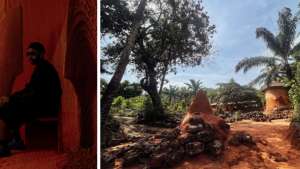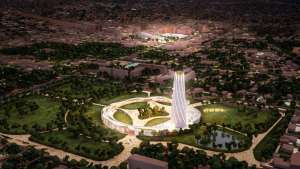
The weather. It has to be one of the most discussed topics ever. And with good reason, the weather has a huge impact on the lives of people the world over. Rain can bring abundant crop yields, but it can also bring floods and damage infrastructure. A lovely sunny day can be good news for festival-goers, but a farmer might prefer cloudy weather to prevent his crops from drying out.
The weather affects many people in different ways, some good, some bad, but they all have one thing in common. Timely, accurate weather and climate information can help them prepare for, adapt to, or mitigate the effects from weather events. Businesses can obtain a competitive advantage, and governments can make better informed decisions if they have access to this type of information.
The UNDP Programme on Climate Information for Resilient Development in Africa (CIRDA) is helping National Meteorological and Hydrological services (NMHS) in 11 African countries to improve their weather and climate information products. This is done through the provision of technical and scientific support, strategic investments in meteorological and hydrological equipment, the provision of trainings, and by initiating partnerships between the NMHS and high-tech service providers. As a direct result of the programme, the NMHS will gain the capacity to produce forecasts with unprecedented accuracy. And that's where your help is needed.
One major challenge for the NHMS to overcome is “the last mile”. What this basically means is to package, distribute and present the weather and climate information products and services in such a way that it becomes interesting and useful to the potential end-users. This might seem like a trivial exercise to a community of innovative developers, but to the very traditional world of meteorology and hydrology, a world of data, observations, models and statistics, this last mile is often a very long mile indeed.
The CIRDA programme is organising a workshop on this subject, in March 2016 in Zambia. And in parallel, is launching the Climate Action Hackathon. The Hackathon kicks off with a three-day in-person event in Livingstone, Zambia, on the 15, 16 and 17 March, followed by a virtual hackathon that will run until June 1st, 2016.
The recipe for both events is fairly straightforward. Participants will have at their disposal the data which are commonly available to an NMHS – forecasts, rain amounts, etc. – and will have to use those data to (help) solve the type of climate-related problems and challenges that African countries face. That could mean a novel flash flood early warning system, or an innovative platform to reach end-users in the private sector. Or it could even be the translation of the routine forecast into understandable language; instead of telling people the chance of rain is 13 per cent, tell them to put on their flipflops and sunglasses! Anything goes, as long as it helps the NMHS to get the message out there.
The Climate Action Hackathon is open for everybody to join in. In addition to the participation in the virtual Climate Action Hackathon, 25 travel scholarships to the physical Hackathon in Zambia will be made available through UNDP. We will make a selection of the most interesting ideas, who will be awarded these travel scholarships. If you'd like to win an invitation to the physical event, please subscribe on our website.
At the end of the virtual Climate Action Hackathon in June 2016, the most promising idea will be selected for development. Together with CIRDA's partner, the Brown Institute of Columbia University/Stanford University, they will assist the winners in putting their ideas into practice, and thereby help Africa adapt to climate change!
*This article was originally published on the iHUB Nairobi blog






